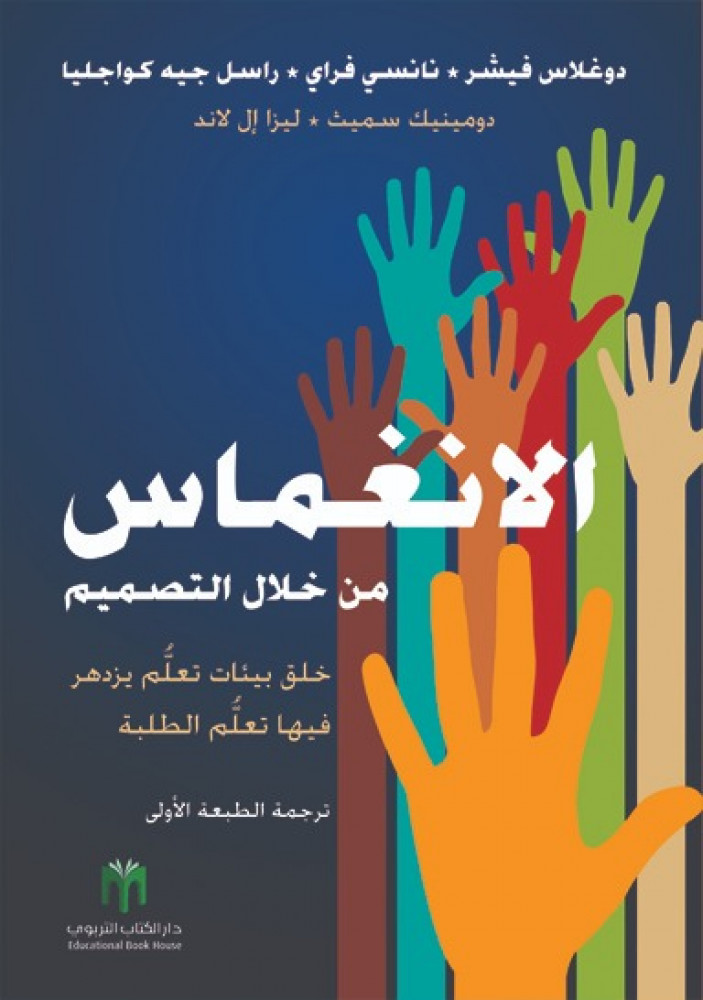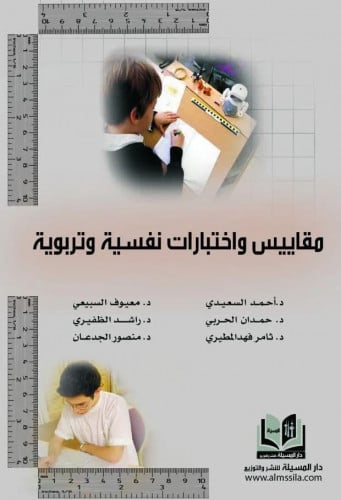AVAILABLE IN ARABIC
About This Book
Every teacher wants engaged students. No student wants to be bored. So why isn’t every classroom teeming with discussion and purposeful activity centered on the day’s learning expectations?
Consistently finding a rhythm—where students progress through relevant and challenging content—isn’t easy. But not only is it possible, it can also seem effortless when teachers have the right design for genuinely engaging students.
Classroom dynamics are inherently complex, as multifaceted as the personalities in the room, so where should a teacher begin? Engagement by Design gives you a framework for making daily improvements and highlights the opportunities that will bring the greatest benefit in the least amount of time. You’ll learn about relationships, clarity, and challenge, including
- How getting to know each student a little better can fundamentally change the classroom dynamics—and how to do that
- What it means to be an “intentionally inviting” teacher, and how it gives you an advantage in creating an environment conducive to learning
- How to bring more clarity to key aspects of your work—and how it can reap substantial rewards for you and your students
- How opening the culture to student voice—listening to students—is linked to academic motivation, and how to use it to shape your day-to-day planning
- The best ways to increase learning for your students, boosting the proportional value of their school year
Understanding engagement—and actively pursuing it—can make all the difference between forging a real connection with students and having a classroom that’s simply going through the motions. Engagement by Design puts you in control of managing your classroom’s success and increasing student learning, one motivated student at a time.
Table Of Content
Chapter 1. The Inviting Classroom
Are Students Engaged?
Intentionally Inviting Classrooms
Low-Hanging Fruit
Student Voice
Engagement by Design
Conclusion
Chapter 2. Relationships
Building Relationships With Students
The Invitational Aspect of Teacher-Student Relationships
The Equitable Aspect of Teacher-Student Relationships
How Teachers Communicate Expectations Differentially
The Advocacy Aspect of Teacher-Student Relationships
Conclusion
Chapter 3. Clarity
Clarity in Teaching
Know What Students Are Supposed to Learn
Know How Students Learn
Know How to Communicate What Students Will Be Learning
Know How to Develop Success Criteria
Conclusion
Chapter 4. Challenge
Inviting the Struggle
Fluency
Stamina
Strategic Thinking
Struggle That Builds Expertise
Conclusion
Chapter 5. Engagement
The Engagement Gap
Engagement: Overused and Misunderstood
Bringing It All Together
The Engagement Equation
Voice (V)
Self-Worth (SW)
Purpose (P)
Engagement
Engaged Students
Engaged Classrooms
Engaged Student Outcomes
The Ending of One Story Is the Beginning of Another
Conclusion
About the Authors
Douglas Fisher:

DOUGLAS FISHER, PhD, is Professor of Educational Leadership at San Diego State University and a leader at Health Sciences High & Middle College. He has served as a teacher, language development specialist, and administrator in public schools and non-profit organizations, including 8 years as the Director of Professional Development for the City Heights Collaborative. Doug has engaged in professional learning communities for several decades, building teams that design and implement systems to impact teaching and learning. He has published numerous books on teaching and learning, such as The Teacher Credibility & Collective Efficacy Playbook and PLC+.
Nancy Frey:

NANCY FREY, PhD, is Professor of Educational Leadership at San Diego State University and a leader at Health Sciences High & Middle College. She has been a special education teacher, reading specialist, and administrator in public schools. Nancy has engaged in professional learning communities as a member and in designing schoolwide systems to improve teaching and learning for all students. She has published numerous books, including The Teacher Clarity Playbook and Visible Learning for Literacy.
Russell Joseph Quaglia

Dr. Russell J. Quaglia is a globally recognized pioneer in the field of education, known for his unwavering dedication to student voice and aspirations. Dr. Quaglia has been described by news media as America's foremost authority on the development and achievement of student voice and aspirations. His innovative work is evidenced by an extensive library of research-based publications, prominent international speaking appearances, and a successfully growing list of aspirations ventures.
Among these ventures, Dr. Quaglia authored the School Voice suite of surveys, including Student Voice, Teacher Voice, Parent Voice, and iKnow My Class. His recent book, Student Voice: The Instrument of Change published by Corwin is already receiving international acclaim.
In addition to founding and leading the Quaglia Institute for Student Aspirations, Dr. Quaglia also founded and currently chairs the Aspirations Academies Trust, a sponsor of primary and secondary academies in England built upon his aspirations research. Most recently he has founded the Teacher Voice and Aspirations International Center, dedicated to amplifying the voice of teachers in order for them to realize their aspirations and reach their fullest potential.
Dr. Quaglia earned his bachelor's degree at Assumption College, a masters degree in economics from Boston College, and master of education and doctorate degrees from Columbia University, specializing in the area of organizational theory and behavior. He has been awarded numerous honorary doctorates in humanitarian services for his dedication to students. Dr. Quaglia's work has also led him to serve on several national and international committees, reflecting his passion for ensuring that students' and teacehers’ voices are always heard, honored, and acted upon.
SBN: 9786038147924
Author: Douglas Fisher & Nancy Frey & Russell J. Quaglia
Publisher: Educational Book House
Publish Year: 2022
Size: 17x24cm
Pages number: 256













